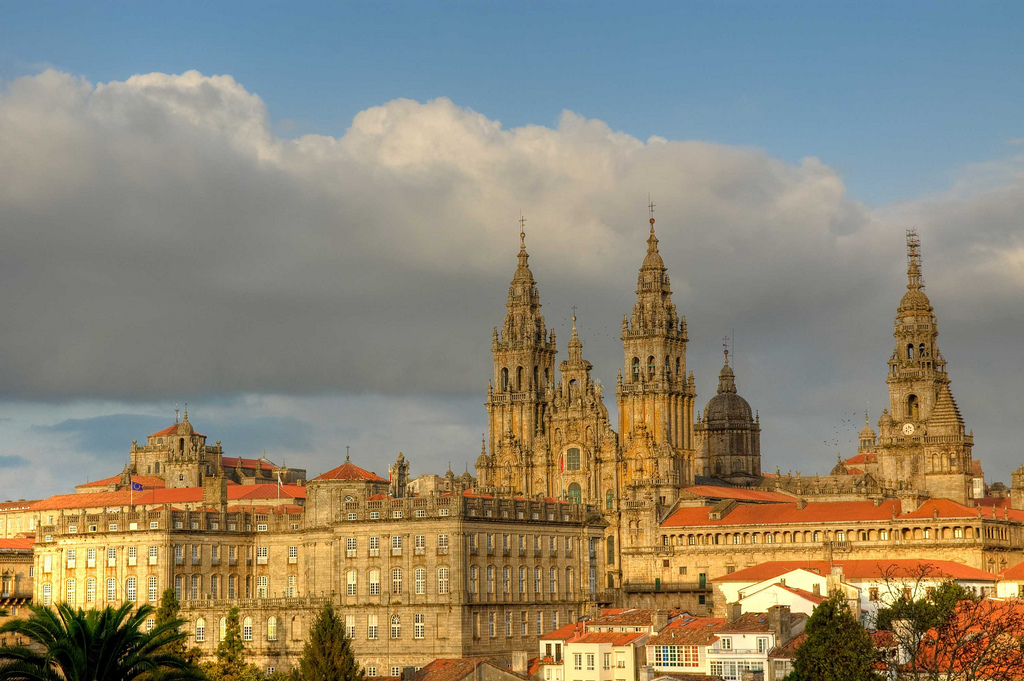Study in Santiago de Compostela, Spain
Study in Santiago de Compostela, Spain

The city of Santiago de Compostela, commonly known as Santiago, is a municipality in Northwestern Spain and the capital of the autonomous community of Galicia. Santiago de Compostela has its origin in the shrine of Saint James the Great, now the city's cathedral and the ultimate destination of the Way of St. James, a leading Catholic pilgrimage route that originated in the 9th century. In 1985 the city's Old Town was designated a World Heritage Site by UNESCO, the United Nation’s historical and cultural body.
At the time of the last census in 2012, Santiago de Compostela had a population of 95,671 inhabitants, while the total metropolitan area had a population of roughly 180,000 residents. These numbers include approximately 5,000 foreigners in the city, representing roughly 5 percent of the total population. Of these, the main nationalities are Brazilians (11%), Portuguese (8%) and Colombians (7%).
By language, approximately 22 percent of the population always speaks in Galician, 15% always speak in Spanish and the rest use both languages interchangeably.
Things to Do and See in Santiago de Compostela
Santiago de Compostela offers a number of great things to do and see. Some of the more popular sites and attractions in the city include:
The Cathedral of Santiago de Compostela
The Cathedral of Santiago de Compostela is a cathedral of the archdiocese of the same name and one of the more impressive World Heritage Sites in Galicia, Spain. The cathedral is the reputed burial-place of Saint James the Great, one of the original apostles of Jesus Christ. The cathedral has historically been a place of pilgrimage on the renowned Way of St. James, since the Early Middle Ages. The actually building that is the Santiago de Compostela Cathedral is a Romanesque structure with later-added Gothic and Baroque elements.
Monastery of San Martino de Pinario
The Monastery of San Martiño Pinario is a former Benedictine monastery in the city of Santiago de Compostela, Galicia, Spain. Sadly, little remains of the original medieval buildings, as the monastery has been largely rebuilt since the sixteenth century. The monastery was closed in the nineteenth century in the Ecclesiastical Confiscations of Mendizábal, and it now serves as a Catholic seminary.
The facade of the Monastery has an altarpiece structure and shows the figures of the Virgin Mary and Child and a number of Benedictine saints. St. Martin of Tours completes the set on top with a classic representation: shown on horseback and dividing his cloak to shelter a beggar.
The church of the monastery, which was completed in 1652, is the work of Matthew Lopez and Gonzalez de Araújo. It opens onto the square that bears the name of the monastery. The plan of the church has a single nave covered with a barrel vault; and six side-chapels open onto the nave. The crossing is illuminated by a dome, and the choir stalls, Baroque in style, are also the work of Matthew de Prado.
The monastery has two cloisters. The largest was built in 1636 by Bartolome Fernandez Lechuga (the author of the transept of the church), and continued by José Peña de Toro and Fernando Casas y Novoa. The later finished the cloisters in 1743.

